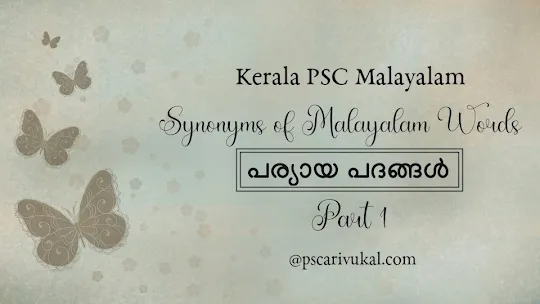N. Kumaranasan was a great social reformer and a philosopher-poet who revolutionized Malayalam literature through his poems in the first quarter of the 20th century.
Being the oldest of the modern triumvirate poets of Kerala, he transfigured and liberated poetry from the hands of condescending metaphysical poets of Brahmin society into a lyrical one. Thus he introduced romanticism in Malayalam poetry.
Belonging to the Ezhava community, he eloquently brought forward the issues of class oppression, gender-bias, feudalism, imperialism, and untouchability through his poems. Thus earning him the name "തൂലിക പടവാളാക്കിയ കവി." The educated youth of that generation was vastly influenced by his poems.
He was also greatly influenced by the teachings of Sree Narayana Guru and had a fascination with Buddhism. Guru's teachings and Buddhist ideals were often reflected in his writings.
Another important aspect of poems is the importance he gave to the women, treating them as equal human beings, and many of his poems had a woman-centric view.
The first published poem of Kumaranasan was "Kottaran Kasavitta Mundu (കോട്ടാറൻ കസവിട്ട മുണ്ട്)" describing the festival of Onam.
Below are some famous works of Kerala's Snehagyakan, Kumaranasan.
Notable Works of Kumaranasan
Sthothrakrithikal
Saundaryalahari (സൗന്ദര്യലഹരി)
- Translation of Sankaracharya's Work.
Veenapoovu (വീണപൂവ്)
- First Notable Work.
- First Published in Mithavadi.
- Written at Jaina Medu (ജൈനിമേട്), Palakkad.
- First Symbolic Poem in Malayalam.
- Re-published in Bhashaposhini by C. S. Subrahmanyan Potti.
- First Ideal ‘Khandakavya’ (Miniature Epic) in Malayalam. (marked the beginning of ‘Khandakavya’ in Malayalam).
- Based on the last days of Sree Narayana Guru.
- Its centenary was celebrated by publishing "Veenapoovinu 100" in 2017 (intro. by M. M. Basheer & English translation by K. Jayakumar).
Oru Simhaprasavam (ഒരു സിംഹപ്രസവം)
Nalini (നളിനി)
- Subtitle – Allengkil Oru Sneham.
- Background – Love story of Nalini & Diwakaran.
- Preface Written by A. R. Raja Raja Varma.
Leela (ലീല)
- Background – Love story of Leela & Madanan.
- Got Inspiration from the Legendary story of Layla and Majnun written by poet Nizami Ganjavi.
- Mamsanibadhamalla Ragam (മാംസനിബദ്ധമല്ല രാഗം).
Maithreyi (മൈത്രേയി)
Rajayogam (രാജയോഗം)
Sree Buddha Charitham (ശ്രീബുദ്ധചരിതം)
- Epic Poem written in 5 volumes.
- Lengthiest work of Kumaranasan.
- Translation of Edwin Arnold's 'Light of Asia' (a biography of Sri Buddha).
Balaramayanam (ബാലരാമായണം)
- Epic Poem with 267 verses.
- Written for Children.
Graamavrikshattile Kuyil (ഗ്രാമവൃക്ഷത്തിലെ കുയിൽ)
Prarodanam (പ്രരോദനം)
- Elegy on the death of A. R. Raja Raja Varma, the famous Malayalam grammarian, poet, and academician.
- Elegy on the death of A. R. Raja Raja Varma, the famous Malayalam grammarian, poet, and academician.
Chinthavishtayaya Sitha (ചിന്താവിഷ്ടയായ സീത)
- Background – Plight of Valmiki's Sita in Ramayana.
- Famous Lines – 'വിനയാർന്ന സുഖം കൊതിക്കുകില്ലിനിമേൽ ഞാനസുഖം വരിക്കുവാൻ.'
Prabodhachandrodayam (പ്രബോധ ചന്ദ്രോദയം)
Duravastha (ദുരവസ്ഥ)
- Background – About a Brahmin woman named Savithri who marries a lower caste man Chathan who gave her refuge during the Malabar Rebellion of 1921.
- Theme – Intercaste marriage,
- First Futuristic Poem in Malayalam.
- Famous Lines – Mattuvin chattangale swayam, allenkil mattumathukalee ningalethan (മാറ്റുവിൻ ചട്ടങ്ങളെ സ്വയമല്ലെങ്കിൽമാറ്റുമതുകളീ നിങ്ങളെത്താൻ).
.
Pushpakavadi (പുഷ്പവാടി)
Chandalabhikshuki (ചണ്ഡാലഭിക്ഷുകി)
- Background – About a low-caste woman named Matangi who offers a drink of water to a young Buddhist monk, Ananda.
- Based on Buddhist legends.
Karuna (കരുണ)
- Background – Based on the Buddhist tale of a courtesan Vāsavadattā attracted to the Buddhist monk Upagupta.
- Written in Vanchipattu Vruthum (നതോന്നത),
- The Last Poem Written by Kumaranasan.
- അവസാനം രചിച്ച ഖണ്ഡകാവ്യം.
Divya Kokilam (ദിവ്യകോകിലം)
- Tribute to Ravindranath Tagore.
- Sung by C. Kesavan during Tagore's Visit to Kerala (Sivagiri) in 1922 for meeting Sree Narayana Guru.
Manimaala (മണിമാല)
Vanamaala (വനമാല)
Dramas
Vichitravijayam (വിചിത്ര വിജയം, modeled on Sanskrit drama) & Mrityunjayam (മൃത്യുഞ്ജയം).
Both of these dramas were written during his stay with Sree Narayana Guru in Aruvippuram. However, he refused to publish "Vichitravijayam" because he thought it was not up to the mark.
Notable Works of Kumaranasan is a recurring topic in many of Kerala's PSC exams. So we can expect that trend will continue in the future and this post will help you cover it.
📝 Read More:
📝 SideNotes - :
- "Swathanthra Gatha (സ്വാതന്ത്രഗാഥ)" was written by – Kumaranasan.
- The biography of Sree Narayana Guru was written by – Kumaranasan.
- Asan's books under Buddhist legends – Karuna, Chandala Bhikshuki & Sree Buddhacharitam.
- Two epics were written by Kumaranasan – Sree Buddha Charitham (5 volumes) & Balaramayanam (3 volumes).
- Which literary critic has created a controversy by claiming that Kumaranasan's Karuna was an imitation of the Kuchelavirthum – P.K. Narayana Pillai.
- The first magazine in which the Asan's poems were published – Sujananandini (started by Kesavan Asan).
Thanks for reading!!!









Post a Comment
Post a Comment